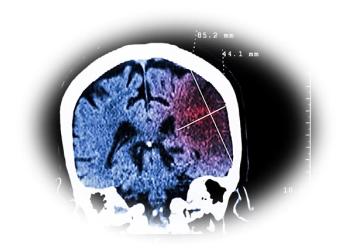
Atrial Fibrillation Guidelines 3-Question Quiz
Rhythm vs rate control and which medication(s) for which patients, when, and why? Test yourself.
For patients with paroxysmal atrial fibrillation (AF), either rate control or rhythm control is considered an acceptable strategy. Primary care and general practitioners are less often aware of the decision-making and medications involved in maintenance of rhythm control vs rate for patients with AF. However, it is important to know when and how to maintain rhythm control for those patients in whom this is the preferred option. Test your own knowledge here!
Question 1. When should rhythm control for AF be pursued over rate control?
A. In all patients with reduced LVEF (< 40%).
B. When a patient remains symptomatic despite adequate rate control.
C. When the patient has a strong preference for rhythm control.
D. When risk of toxicity or side effects from antiarrhythmic medication is low.
E. When there is a high thromboembolic risk (as determined by CHA2DS2-Vasc score).
The correct answer is B. When a patient remains symptomatic despite adequate rate control.
Rhythm control should be pursued if the patient continues to have symptoms despite adequate rate control. Although rhythm control may be preferred in patients with low left ventricular ejection fraction (LVEF) in whom tachycardia is thought to play a role in the cardiomyopathy, rhythm control should not be pursued universally in all patients with reduced LVEF. Patient preference should not be used to decide what strategy to pursue. The risk of toxicity should be considered when choosing which antiarrhythmic medications to use but should not guide the choice of rate vs rhythm control. Finally, thromboembolic risk exists independent of rate vs rhythm control and even after restoration of sinus rhythm, the risk of stroke or systemic embolism is largely unaffected.
Question 2. In a rhythm control strategy, when can antiarrhythmic therapy (eg, flecainide, propafenone, dofetelide, amiodarone, dronedarone, etc) be interrupted or discontinued?
A. When AF becomes permanent.
B. When normal sinus rhythm (NSR) has been restored.
C. When toxicity of antiarrhythmic therapy exceeds its benefit.
D. None of the above.
E. All of the above.
The correct answer is E. All of the above.
All of the options listed are potential considerations for interruption or discontinuation of antiarrhythmic therapy. Option A: when AF has become permanent, there is no longer any benefit to using antiarrhythmic therapy as reversion to NSR is no longer expected. Option B: occasionally, antiarrhythmic medications will be used briefly to restore or maintain NSR with a pharmacologic or electric cardioversion strategy. Once SR has been restored, in patients with paroxysmal AF, the antiarrhythmic is stopped or switched. Finally, Option C: whenever an antiarrhythmic is used, the risk and toxicity of the medication should be weighed against its potential benefits. In the presence of significant toxicity, the medication should be stopped or alternative agent should be selected.
Question 3. Which of the following sets of antiarrhythmic medications are recommended for use in patients with AF and concomitant heart failure (LVEF < 40%) including those patients who have had recent hospitalization for heart failure?
A. Flecainide and propafenone
B. Sotalol and amidoarone
C. Flecainide and amiodarone
D. Dofetelide and amiodarone
E. Dronedarone and amiodarone
The correct answer is D. Dofetelide and amiodarone
Only dofetelide (Tikosyn) and amiodarone (both Class III agents) should be used in patients with LV systolic dysfunction. Class I agents (flecainide and propafenone) are contraindicated in patients with structural heart disease or coronary artery disease, based on increased mortality. Dronedarone has also been associated with an increase in early mortality in patients with severe LV dysfunction. CHF has been known to increase the risk of torsades de pointes in patients on sotalol so this agent is not preferred.
Source: January CT, Wann LS, Alpert JS, et al.
Newsletter
Enhance your clinical practice with the Patient Care newsletter, offering the latest evidence-based guidelines, diagnostic insights, and treatment strategies for primary care physicians.
















































































































































































































































































